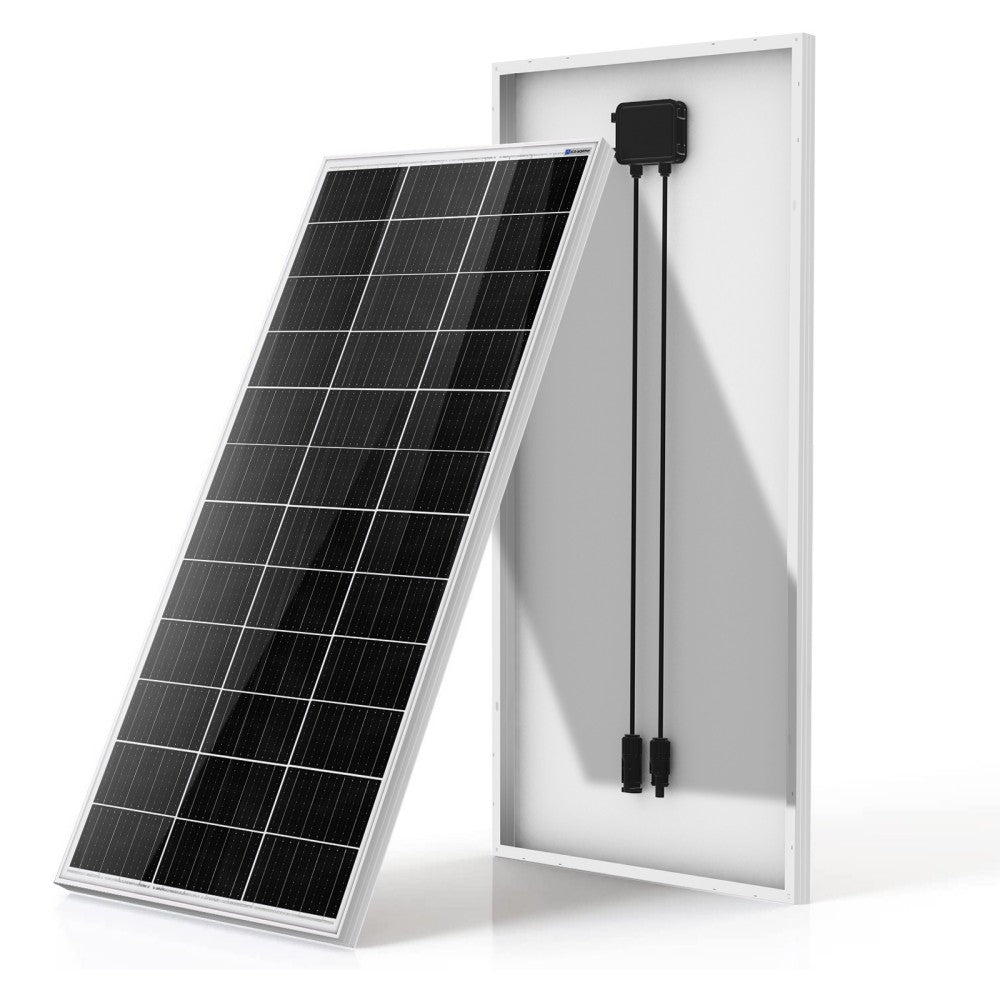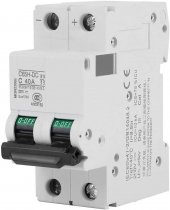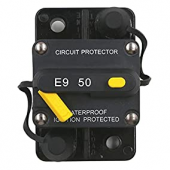Thanks MisterSandals, Snoobler, Hedges and everyone else!
Just to be clear: What I'm thinking is a 2 AWG connector from 2-12V 100AH AGM batteries in series (24V) to a (?)A fuse or circuit breaker, then to positive stud on 2000/4000W inverter. From positive stud on inverter, a 2 AWG connector to a 50A circuit breaker, and then to positive on an EPEVER 40A charge controller.
PV panels will be 3-195W 22.8 Voc in series for total of 585W 68.4 Voc. I may add 4th panel later. Using MC4 connectors down to a 2P C65H-DC 250V 25A/40A Low-Voltage DC mini circuit breaker, then to EPEVER 40A charge controller. (Hoping MC4 connectors can handle the Amps). All panels grounded to earth rod with 10 AGW bare copper wire.
Any thoughts or suggestions?
Thanks for your review of my system. Any suggestions will be very much appreciated.
I'm a first time emergency outage solar system builder. Trying not to burn the house down.
RJ
50A breaker is good for 40A charge controller. But only if breaker is actually good for 50A. Some off-brands trip well below their rating.
The charge controller shouldn't daisy-chain off the inverter, because voltage sag under load and bounce high when load released will be seen as out of range. It should tap directly off battery (if the 50A breaker has AIC rating sufficient for the battery), or off the high amperage fuse (which should have sufficient AIC rating.
A 100 Ah AGM battery can source about 4000A into short circuit. Either ANL or MRBF fuse should be sufficient for inverter.
MC4 connectors are generally rated for 30A. Mix-n-match of various brands, and off-brand, might overheat.
195W PV / 17 Vmp = 11.5A Imp. Maybe 14A Isc? 2s2p would be 23A Imp and 28A Isc.
That is within typical MC4 rating, but for PV circuits we're supposed to design for current 1.56x higher. That's 1.25x safety margin and 1.25x for extra illumination (direct sun plus reflection off clouds.)
What are the current ratings, Imp and Isc, for the panels?
If you join panels in parallel with MC4 pigtails and use screw terminals to connect a longer wire, or an 8 awg MC4 "Y" cable and cut off one MC4 connector to connect the long wire, then you'll be OK.
2 awg works, but more voltage drop. How long? There are resistance tables so you can calculate voltage. 2/0 is better especially if long.
... but as for fuses and wire gauge, your system is like mine in that battery is small. If you drain a 100 Ah AGM battery at 100A, might last 20 minutes to low voltage disconnect. So you can get away without designing for continuous current. But better to do so anyway, in case you use larger battery in the future.





![20210614_103332[3111].jpg 20210614_103332[3111].jpg](https://diysolarforum.com/data/attachments/53/53329-ba86163ebc2b7434cfeae2d13cd6f43f.jpg)




